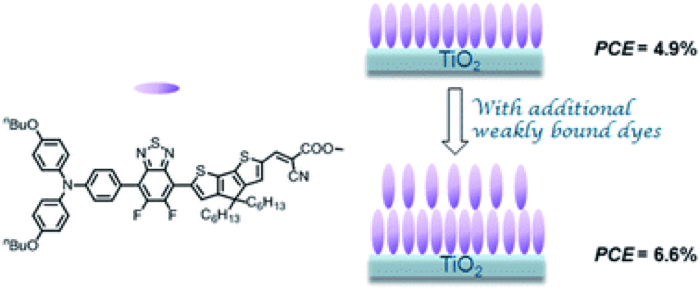Deposition of loosely bound organic D–A–π–A' dyes on sensitized TiO2 film:a possible strategy to suppress charge recombination and enhance power conversion efficiency in dye-sensitized solar cells
X. Kang, J. Zhang, A. J. Rojas, D. O'Neil, P. Szymanski, S. R. Marder and M. A. El-Sayed
Journal of Materials Chemistry A.,
2014, 2, 11229; 10.1039/C4TA02111H

07/2014
This collaborative project between the Marder and El-Sayed groups describes the exploration of novel organic dyes, synthesized through C–H Functionalization, in dye-sensitized solar cells (DSSC’s), uncovering key factors in their manufacture that significantly increase their power conversion efficiency.
One of the key factors that inhibit the conversion of solar energy to electric power in DSSC’s is something called charge recombination, where the electrons injected from the solar rays is mopped up by the liquid electrolyte, a key component of the DSSC. This reduces the number of electrons that generate the electric power.
Using novel dyes prepared using C–H functionalization this project demonstrates that the specific solubility profile of these dyes, imparted by their particular structural features, facilitates a manufacturing technique that reduces the incidence of charge recombination by depositing a loosely bound layer of dye molecules between the sponge-like electrolyte and the mesoporous film that transports the electrons, physically insulating the film.
This significantly increased the efficiency of the studied dyes and this approach could represent and general and new approach to increasing the efficiency of DSSC’s in the future.